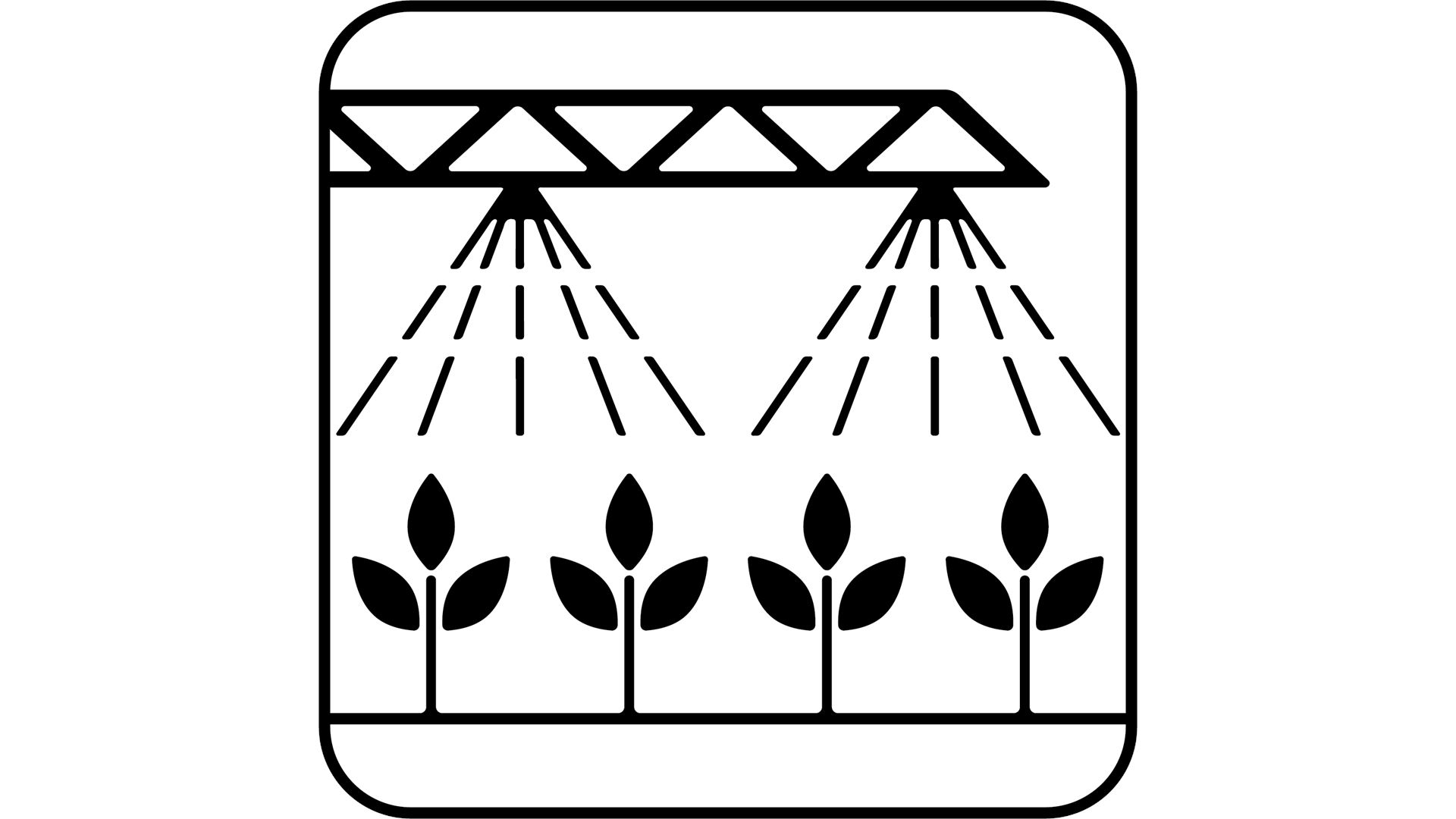21 October 2025 - From Precision, Sustainability and Innovation: Crop Protection Technology Evolves with AI, Spot Spraying and Autonomous Systems Amid Regulatory Pressure
Chemical crop protection is increasingly becoming a topic of public debate, on the part of both consumers and politicians. It should not be forgotten, however, that food security is no longer ensured without crop protection. Damp years, in particular, have shown that fungal diseases such as late blight can lead to significant reductions in yield. Application technology can make a major contribution in this area of conflict. After all, the primary aim is to apply the ever-decreasing number of crop protection agents in an even more precise, effective and environmentally-friendly manner.
Many farmers are almost certainly currently asking themselves whether it is still worthwhile investing in a new crop protection sprayer. However, it will quickly become clear that, in the light of a growing global population and the continuous decrease in agricultural land, the only logical conclusion must be to cultivate the remaining land even more intensively in order to secure food supplies. But where are the main levers in cultivation systems that can be used to secure yields without neglecting aspects such as the environment and sustainability?
In this respect, politicians are presenting farmers with major challenges such as the Green Deal and the Farm to Fork Strategy. This means that savings have to be achieved in crop protection agents while maintaining the same biological effect and good yields because, despite all efforts to achieve savings, cultivated crops must be kept healthy in order to deliver corresponding yields. In the light of this, areas such as hoeing technology, band spraying, spot spraying and artificial intelligence, etc. are becoming significantly more important in order to achieve these goals. At present, the agricultural sector is on the threshold to making crop protection, which is already very precise, even more precise. It is precisely here that the agricultural machinery industry is offering many new or improved ideas for taking the already high standard of application accuracy to new heights.
The combination of mechanical weed control and band spraying technology in row crops has already been adopted by farmers. Spot spraying is currently regarded as the logical evolution and offers vast potential for savings in crop protection agents. Improved forecasting models, closely coupled to the application technology with improved sensors, application maps, artificial intelligence, programs and nozzle technologies, can also help the agricultural sector to gear up better and more sustainably for the future. Better or expanded capacity utilisation of crop sprayers using electronics or liquid fertiliser application also offers farmers many new options that need to be taken into consideration when purchasing a new machine. Agritechnica 2025 is almost certainly the perfect platform for maintaining an overview in the light of such variety and getting up to speed with the latest developments, because you can determine here for certain whether some systems are merely prototypes or whether the technologies have already reached practical maturity.
Optimisation of efficiency
Many equipment manufacturers are extending their portfolios with front-mounted tank systems, container volumes and self-propelled vehicles. No wish remains unfulfilled here. Besides the actual size of the sprayer, however, its filling logistics are also of great importance. This starts with the digital label for crop protection agents, which is expected next year, continues with closed transfer systems (CTS) and ends quickly with the optimum nozzle technology. CTS systems, in particular, are becoming increasingly important, as they give maximum consideration to user protection and the dosing accuracy of crop protection agents is constantly increasing. All areas have one thing in common here: optimum technical equipment for the respective regional farm structure, because simply driving faster does not work in the majority of cases.
Reduced use of crop protection agents
In particular, political demands for reducing the use of crop protection agents have led to a great deal of momentum in the industry's research focuses in the recent past. Without this topic, it is certain that not so many people would be concerned with band application in combination with different hoeing systems, spot spraying and application maps, etc. Particularly in the case of the hoe, a tried-and-tested system has been elevated to a higher level thanks to new technology. Besides the various hoeing units, camera control systems and moving frames are enabling numerous hoes to function even more precisely. Such systems can ensure significant crop protection agent savings in classic root crops such as sugar beet, maize and potatoes.
Band application has also become more user-friendly thanks to new nozzles and crop sprayer systems. Here, farmers can select whether they want to spray the entire area or perform band spraying from the cab. However, the euphoria has to be curbed slightly. Besides the problem that the hoe likes dusty, dry conditions and the sprayer prefers moist conditions, heterogeneity in the field is also occasionally problematic, because the seeding technology also has to be integrated into such a system. Needless to say, the entire operation has to be equipped with RTK steering systems. Even if band application is carried out with a crop sprayer, virtually unsolvable problems currently arise in headland areas and on hilly terrain, with the result that the whole area should treated in this case. Nor is hoeing in rows as easy as it sounds. Farmers are therefore reliant on all modules and technical solutions to achieve maximum savings under the most diverse conditions.
Moving one step further to spot application, the high-tech sector has finally been reached. With such care systems, it is really only possible to treat areas that urgently require crop protection agents. However, one element of the sprayer – the boom – is essential here. This is because, despite all precision, nozzle technology and precise weed identification, one thing remains undisputed: if the boom is not positioned optimally, talk of spot sizes in the centimetre range is pointless. This is where what is called patch spraying comes into play, particularly in the retrofit sector. Virtually any existing ISOBUS sprayer can be used for this with corresponding digital enablements. The advantage here is almost certainly the use of 'standard technology' with normal nozzles, because only sections are activated. Whilst this means that the potential savings in crop protection agents are not so significant, this approach appears to be ideal as an introduction to the topic of spot application. The reason for this is that a new sprayer does not have to be purchased immediately; instead, previously created application maps can be used to obtain good control results while simultaneously achieving crop protection agent savings.
Alternatives to chemical products or hoes are also slowly attracting attention in agricultural machinery. For instance, band treatment systems that use laser technology to control weeds will also be on show this year. These offer the advantage of getting even closer to the cultivated crop, as the work is carried out contactlessly. Such systems almost certainly hold great potential for the future of weed control.
Which nozzle is the best?
Under current conditions, it is apparent that virtually all manufacturers offer drift-reducing nozzle types that can be categorised as either compact injector nozzles or long injector nozzles. Farmers can choose from a wide range of JKI-approved drift-reducing nozzles to find the ideal nozzle for their needs. However, it is still important to ensure that not only drift reduction is optimised and the biological effect is forgotten. This is particularly important to remember when considering the ever-decreasing volumes of water or increasing driving speeds. The main objective should be to ensure application quality through sufficient wetting and, if necessary, sufficient crop penetration. Systems such as drop leg additionally offer the option of bee-friendly crop protection in rape and potatoes, for instance.
In the area of pulse width modulated nozzles, it is also becoming apparent that the technology sometimes has to mature for a little longer, even though this topic has been under discussion for a number of decades. Systems that operate reliably at frequencies from 20 to 100 Hz are now emerging, however, transforming various possibilities into reality. In addition to curve compensation, spot spraying and application quantities that can be varied within the boom, etc., these systems demonstrate vast potential for fulfilling the ever-increasing requirements and regulations in practice. Good existing sprayers can also be elevated to the latest state of the art with retrofit solutions.
Ultimately, however, success in controlling diseases, insects and competing weeds will determine acceptance amongst farmers. Despite all discussion about savings and the like, one aspect must not be forgotten: farmers make every effort to apply only as much crop protection agent as is absolutely necessary to produce healthy food, something that they have been doing for many years.
Autonomous systems
A very high level of activity can be seen in the area of autonomous systems – or, to put it more simply, robots. Besides well-known companies, numerous start-ups are also dealing with this topic. Several systems are already on the market in the area of hoeing technology, whereas there are very few spraying robots on fields. The reason for this is that, besides numerous legal obstacles, the monitoring effort required during the application of crop protection agents still appears to be a major hurdle to acceptance by farmers. However, attentive Agritechnica 2025 visitors will find numerous solutions to marvel at in this area as well. But not everything that is possible is also allowed to be used. The best example of this is drones. There are various suppliers that are able to apply crop protection agents using drones, but their use is restricted by law to steep-slope wine growing and forestry in Germany.
Media contact:
Malene Conlong
Tel: +49 6924788237
Email: M.conlong@dlg.org
About DLG
With more than 31,000 members, DLG is a politically independent and non-profit organisation. DLG draws on an international network of some 3,000 food and agricultural experts. DLG operates with subsidiaries in 10 countries and also organizes over 30 regional agricultural and livestock exhibitions worldwide. DLG’s leading international exhibitions, EuroTier for livestock farming and Agritechnica for agricultural machinery, which are held every two years in Hanover, Germany, provide international impetus for the local trade fairs. Headquartered in Frankfurt, Germany, DLG conducts practical trials and tests to keep its members informed of the latest developments. DLG’s sites include DLG's International Crop Production Centre, a 600-hectare test site in Bernburg-Strenzfeld, Germany and the DLG Test Centre, Europe's largest agricultural machinery test centre for Technology and Farm Inputs, located in Gross-Umstadt, Germany. DLG bridges the gap between theory and practice, as evidenced by more than 40 working groups of farmers, academics, agricultural equipment companies and organisations that continually compare advances in knowledge in specific areas such as irrigation and precision farming.

